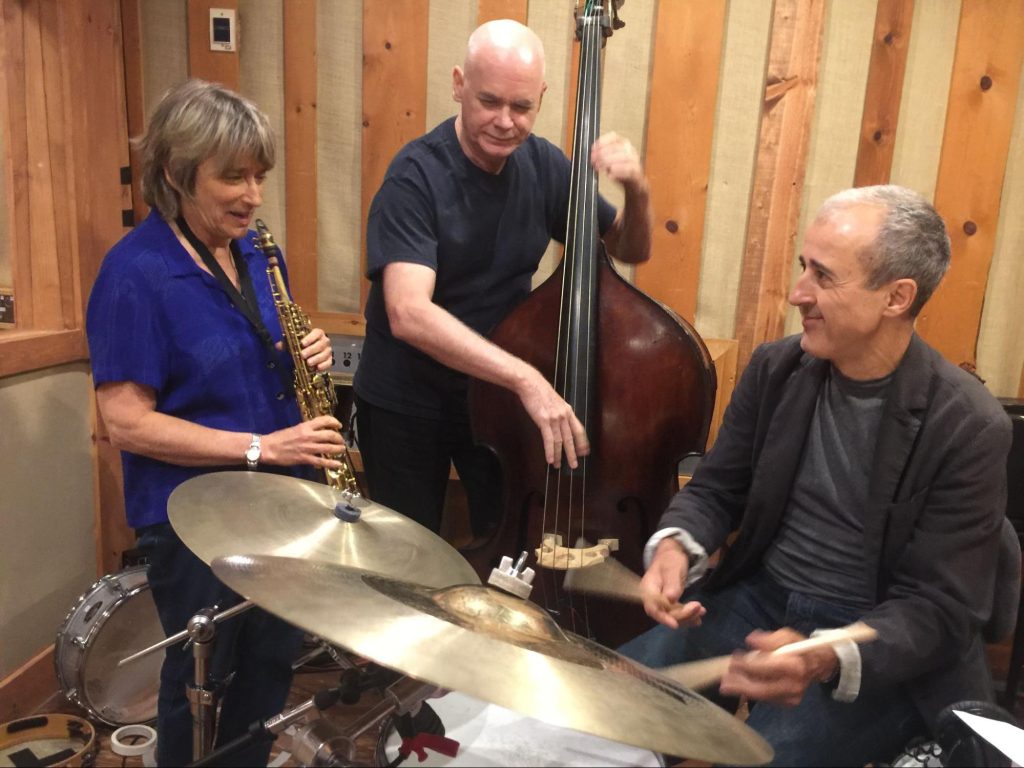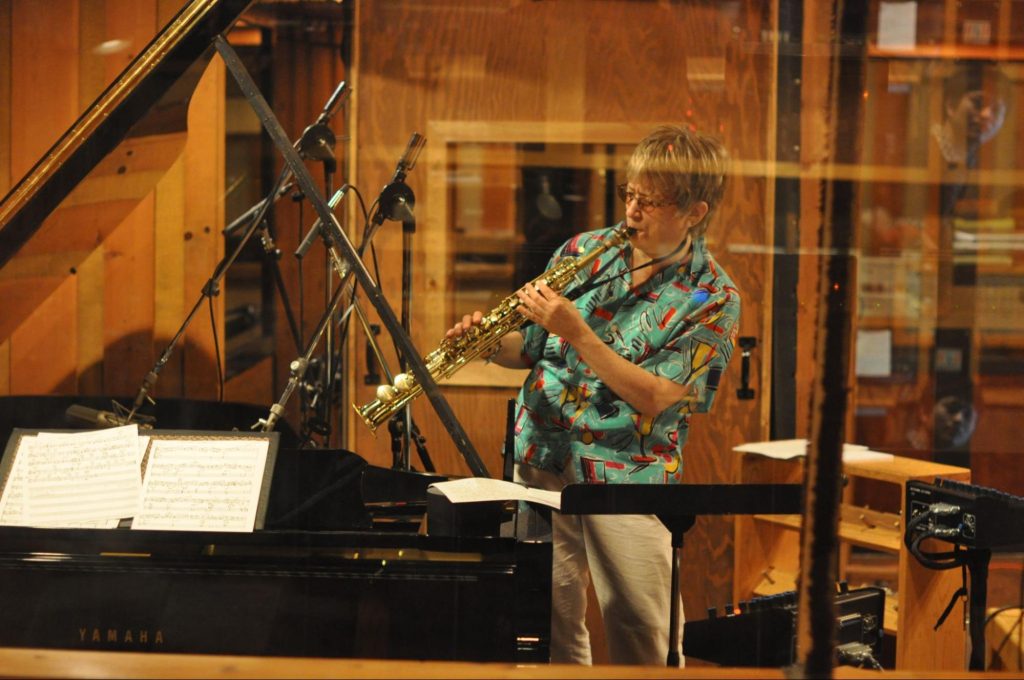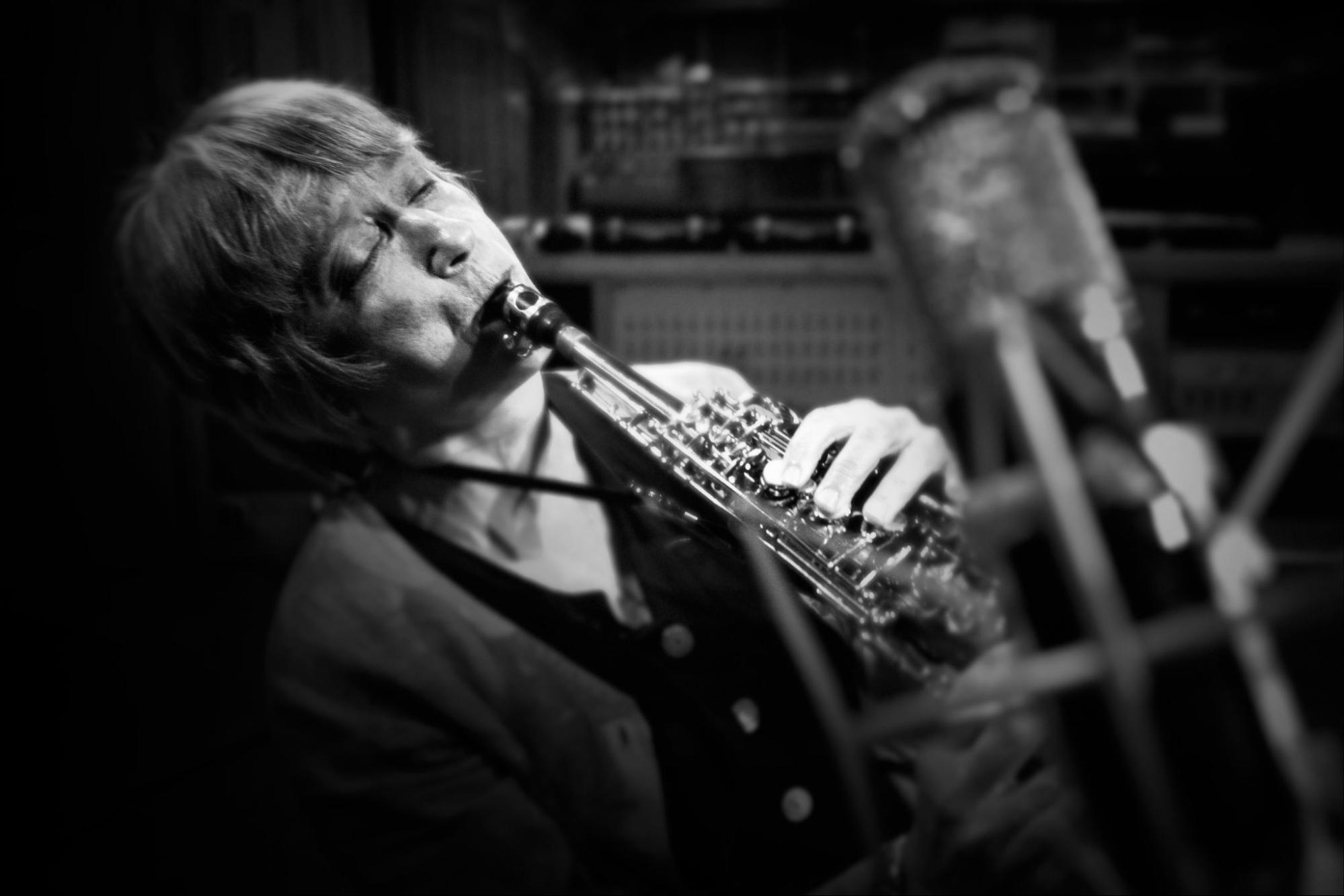Grammy-award winning American jazz soprano saxophonist Jane Ira Bloom has always had a special feeling for ballad performances, so much so that she has now finally released Sixteen Sunsets, a beautiful new recording featuring expressive interpretations from the American Songbook along with five compelling slow tempo original compositions. With this, her 15th album as leader and her first all-ballads album, Sixteen Sunsets pairs JIB with long-time colleagues Cameron Brown on bass and Matt Wilson on drums, along with an exciting new pianist we will all be hearing a lot more from: Dominic Fallacaro.
We had the chance to chat with Jane and her longtime collaborator Ulrike Anderson about the inspirations behind Sixteen Sunsets, her early musical career, and how the 5.1 surround sound mix enhances the beautiful compositions.
Tell us about your early career. What made you want to pursue a career in music? What drew you to the soprano saxophone?
Jane: I was a saxophonist who played alto and soprano, but it was really early on in my career that I found that my voice was on the soprano. How did I know it? It was after my very first recording. I had recorded some things on alto and soprano, but the only ones that really spoke to me were the ones on soprano. That's when I made the move to specialize in that instrument exclusively.
Can you identify a certain moment in your career where you realized that you wanted to pursue a full-time career as a jazz musician?
Jane: I can't locate for you exactly when that was, but music was always with me from a very early time. I became exposed to great jazz artists and the vocabulary of jazz very early on in my education. So it was there very early on. That's all I can say.
Looking back at your decades-long career, is there a particular musician you’re most proud to have collaborated with?
Jane: Well, there’s something special about all of them. So it's hard to pick out just one, but there are certainly musicians and people who I’ve tended to collaborate with for long periods of time. Those are the ones you hear on the recordings. It’s hard to pick out just one that’s special, to be honest.

Tell us about the making of Sixteen Sunsets. Were there certain influences you were trying to emulate on the record? Was the project envisioned in surround sound from the get-go?
Jane: Jim Anderson imagined it in surround sound. I was very concerned about recording exclusively ballads for the album, but it was really Jim's insight at the time that amplified and enriched the final product. I've always had a very special feeling for the American Songbook: I grew up listening to it and know it in my bones, so it just came naturally. It was a very special experience to just play an all-ballads album.
In what ways do you feel that 5.1 surround or immersive mixing enhances your music?
Jane: It's such an overwhelming experience, like hearing your insides coming at you from the outside. I don't know how else to describe it, but as a musician you're used to hearing the instruments in the configuration that you hear them in reality. Surround sound can imagine you in an ensemble, but the one thing that an artist is never prepared for is being surrounded by the sound of their own instrument. That's what's so seductive about it.
We found Jim Anderson’s 5.1 mix of Sixteen Sunsets to be rather unique in the sense that the listener is not positioned in the center of the ensemble (as is typical with many pop/rock surround sound mixes) or given the perspective of an audience member at a live performance. The immersive effect is unlike anything we’ve experienced before.
Ulrike: I think Jim never would want his recordings to be gimmicky. His goal is to enhance the musical performance. It's about making the music bigger and having it speak to the listener in a deeper way.
While recording, we actually utilize classical surround techniques. So there is not that kind of extreme separation that you have in some pop recordings, where it sounds like multiple mono channels just being split into speakers.
On Sixteen Sunsets, Jane’s soprano sax was recorded using a hamasaki square and the drum overheads were captured using two stereo pairs. The result is that he’s able to work with those two elements in four-channel space, but not with the separation of a pop recording.
It goes beyond merely placing instruments in a three-dimensional space: he’s placing music and textures. He makes sure that the root of the music, like the bass, is always up front. It'll never be in left back or right back, because the core of the music has to be upfront. Otherwise, you get distracted. There are a few things that come from knowing and feeling the music, and others are simply aesthetic decisions.
Very interesting. So most of the surround effect is achieved via mic placement while tracking?
Ulrike: Yes, I think he comes into the project knowing what he wants to achieve. You have to come into the recording session with a plan.
We've had practice recordings with an orchestra, just so we’d know how to place all our mics next time. When you’re working with sixty microphones, it’s useful knowing ahead of time just the way it needs to be. If you don't have the microphones out, then you don't have the sound.
With one recording we did recently, we thought we had wanted to go immersive. Then once we mixed in 5.1, we decided against it.
What drew you to Emily Dickinson as your source of inspiration for Wild Lines?
Jane: When I was younger, I remember seeing a play called The Belle of Amherst. I think that was my first exposure to Emily Dickinson’s work. Did you know that before she was a poet, she was also a musician? She played the piano and improvised. Anyway, it sort of solidified this feeling I had that there was something in the way that she treated words that reminded me of the way jazz musicians work with notes. So a whole body of music arose that would be played in conjunction with readings of excerpts of her poetry that stimulated my musical imagination.
Ulrike: It's beautiful. We recorded that at Avatar Studios (now known as Power Station at BerkleeNYC). I actually prefer the 5.1 mix. I don't quite know why, but the poetry speaks better to me in surround than it does in stereo. I really cherish that a lot.

We saw that you have an asteroid named after you! How did that come about?
Jane: I'll tell you the story. I recorded an album in Clinton Studios years ago called Art and Aviation. It was a period of time where I wrote a lot of music inspired by my work with NASA. I was the first musician to be commissioned by NASA.
At the Lowell Observatory in Flagstaff, Arizona, there was an astronomer by the name of Brian Skiff. It turns out he was a huge jazz fan, and he was listening to Art and Aviation when he discovered that particular asteroid. I understand that in the science community, the person who discovers something is also allowed to name it. So that's how “asteroid 6083 Janeirabloom” came about.
Ulrike: I have one bit more bit of trivia for that. When Jim and Jane won the grammy for Early Americans, the presenter was Neil deGrasse Tyson.
Are there plans for more future collaborations between Jane and the Andersons?
Jane: Yeah, when the pandemic is over.
Ulrike: We could tell them about the Berenice Abbott thing. I mean, we just have to record that.
Jane: All the music's written and ready to go. It's called Picturing The Invisible and it's all music inspired by Berenice Abbott’s fascinating science photography. So, it involves many players and short compositions. I’m hoping we can finally start recording in the spring.
Purchase Sixteen Sunsets in the IAA Shop: link
